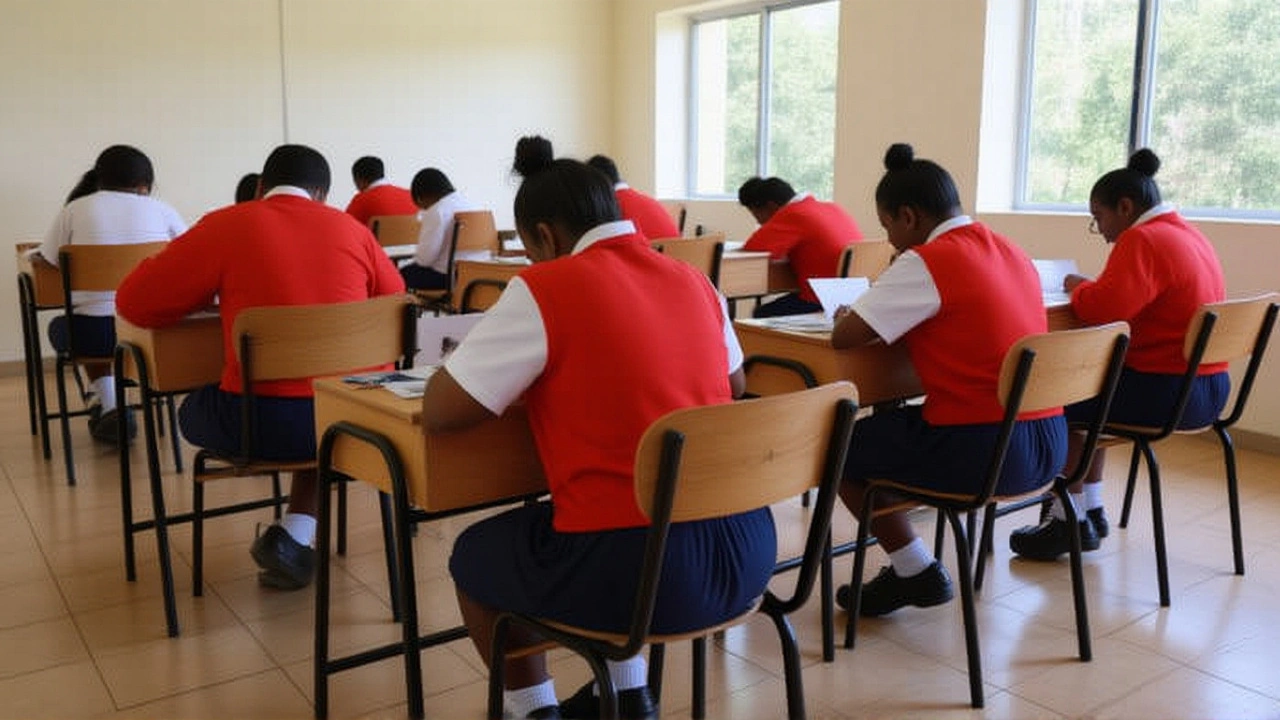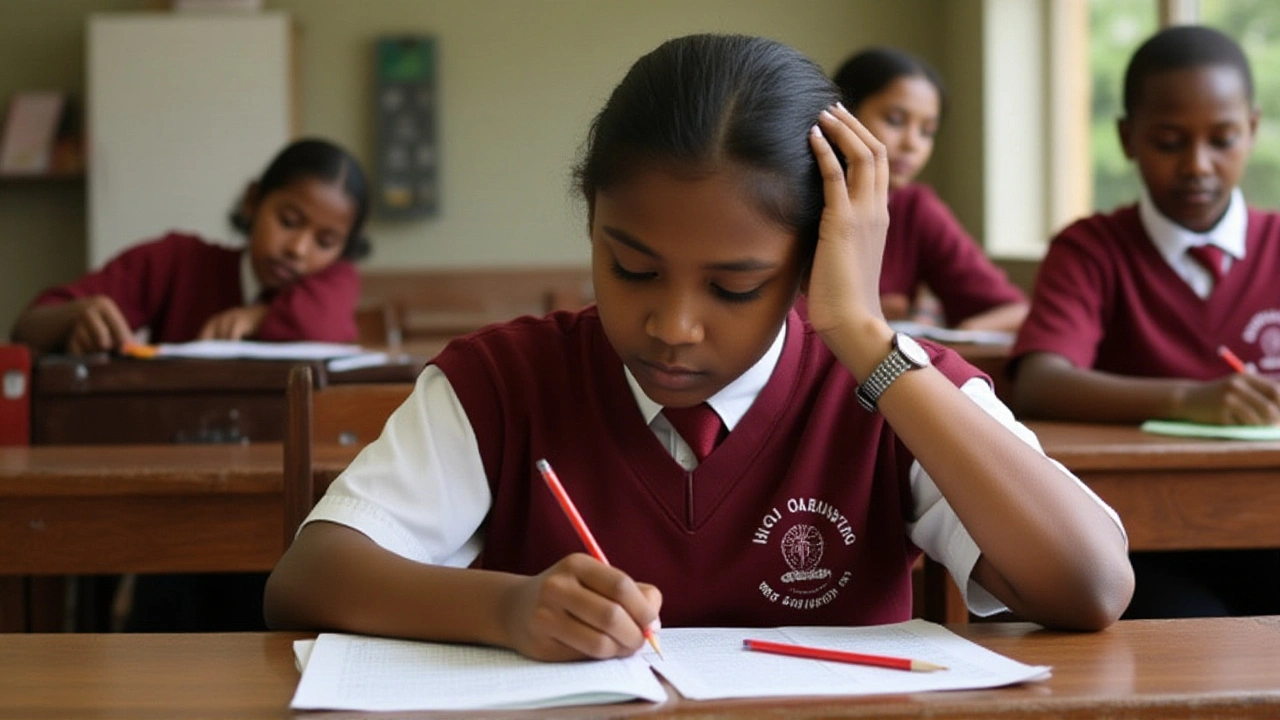When KNEC announced on Monday that registration for the KJSEA is now open, schools across Kenya felt the pressure to act before the March deadline. The move matters because the assessment will decide which learners earn a spot in senior secondary schools for the 2025‑2026 academic year. Heads of institutions must log into the new portal between 3 March and 28 March 2025, enter every eligible Grade 9 learner, and confirm that the required KPSEA and SBA scores are on file.
Registration Timeline and Portal Mechanics
The registration window runs from 3 March to 28 March 2025 – a tight 26‑day span that leaves little room for delay. Schools access the system through a dedicated KNEC portal that consolidates the Kenya Primary School Education Assessment (KPSEA) performance reports, School‑Based Assessment (SBA) scores, and the upcoming KJSEA entry forms. Once a learner is entered, the data are instantly linked to the national Grade 9 database, eliminating the need for paper‑based submissions.
“We expect roughly 1.2 million candidates to register this year, so the digital platform had to be rock‑solid,” said Samuel Otieno, KNEC Director of Assessments. Otieno added that the portal also pushes real‑time alerts if a school attempts to submit incomplete records.
Eligibility Criteria and Digital Transfer Rules
Only learners who already exist in the Grade 9 database, possess a KPSEA performance report, and have completed SBA scores for both Grade 7 and Grade 8 are eligible. The council stresses that each learning area must be graded, otherwise the registration will be rejected. To prevent double‑counting, any Grade 9 transfer request must be lodged online before the 28 March cut‑off; after that date, transfers are barred.
“The online‑only transfer rule protects the integrity of the database and saves schools from bureaucratic headaches,” explained Dr. Amina Yusuf, an education analyst at the African Policy Institute. Yusuf noted that similar digital transfer systems in South Africa reduced duplicate entries by 37 % last year.
New Eight‑Level Grading Structure
KNEC unveiled an eight‑level grading system for the KJSEA that replaces the old A‑F scheme. The top tier, Exceeding Expectations EE1 (Achievement Level 8), covers 90‑100 % of marks and carries 8 points, labeled “Exceptional.” EE2 (Level 7) spans 75‑89 % for 7 points (“Very Good”). The Meeting Expectations band includes ME1 (Level 6, 58‑74 %, 6 points, “Good”) and ME2 (Level 5, 41‑57 %, 5 points, “Fair”). Finally, Approaching Expectations AE1 (Level 4, 31‑40 %, 4 points) is tagged “Needs Improvement.” No levels below 4 are awarded for KJSEA, a shift meant to align scores with the Competency‑Based Curriculum (CBC) pathways.
Schools will receive automated score sheets via the portal once results are posted, allowing them to calculate each learner’s point total and rank for senior school placement.

Exam Schedule, Rehearsals, and Logistics
The 2025 KJSEA exams kick off on 27 October and wrap up on 3 November, with rehearsals slated for 24 October. The eight‑day testing window includes two “morning” and two “afternoon” sessions per day, giving candidates a chance to sit for up to four subjects each day. Examination centres are spread across all 47 counties, and each centre must submit a signed attendance register through the portal before the start of each session.
Logistically, KNEC has hired 5,000 invigilators and deployed 1,200 portable desks to schools lacking permanent facilities. The council also contracted a national courier service to deliver answer scripts within 48 hours of each exam day.
Impact on Senior School Placement and the CBC Transition
Results from the KJSEA will be the primary determinant for December 2025 senior‑school placement. Learners scoring 8 or 7 points will be funneled into high‑performing schools that offer the full suite of CBC tracks, while those with 5 or 4 points may be directed to schools with more limited subject offerings. The transition is critical because Grade 9 students will move into Grade 10 in January 2026, where they will begin their first semester under the CBC framework.
“This assessment is the bridge between junior secondary and the CBC senior cycle,” said Margaret Njoroge, headteacher of St. Mary’s Junior Academy in Nakuru. Njoroge noted that her school has already begun counselling students on subject combinations based on the anticipated KJSEA outcomes.

Background: How KJSEA Fits Within Kenya’s Assessment Landscape
The KJSEA replaced the older Kenya Certificate of Secondary Education (KCSE) entry exams in 2022, aiming to provide a competency‑based snapshot of learner achievement at the end of junior secondary. Unlike the KPSEA, which is administered at Grade 6 and serves a monitoring function, the KJSEA directly influences placement decisions. The integration of SBA scores from Grades 7 and 8 ensures that continuous assessment, not just a single high‑stakes test, informs the final outcome.
Since its rollout, the KJSEA has been piloted in three counties, yielding an average pass rate of 78 % in 2023. KNEC hopes the 2025 cohort will improve on that figure by tightening the registration process and rolling out the new grading rubric.
Frequently Asked Questions
How does the new grading system affect a learner’s chance of getting into a top senior school?
Learners who achieve EE1 (8 points) or EE2 (7 points) will automatically qualify for the most competitive senior schools, which prioritize high‑scoring candidates for science, technology, engineering, and mathematics (STEM) tracks. Those landing in the ME1 or ME2 bands (6‑5 points) will still have options, but may be steered toward schools with a broader curriculum offering.
What happens if a school misses the 28 March registration deadline?
Late entries are not accepted; the learner’s name will be omitted from the Grade 9 database and they will be ineligible for the 2025 KJSEA. The only recourse is to apply for a transfer in the next academic cycle, which could delay senior‑school placement by a full year.
Can a learner transfer to a different junior secondary school after registering?
Transfers are permitted only through the online system and must be completed before 28 March 2025. Once the portal closes, no further changes to the Grade 9 roster are allowed, ensuring the integrity of the placement data.
Where can parents view their child’s KPSEA and SBA scores?
All KPSEA performance reports and SBA scores are uploaded to the same KNEC portal used for KJSEA registration. Parents receive a secure login link from their school and can download the documents directly, eliminating the need for physical copies.
What is the timeline for senior‑school placement after the KJSEA results are released?
Results are expected to be posted by mid‑December 2025. Schools will then use the point totals to submit placement preferences to the Ministry of Education, which finalises allocations by the end of December. Successful candidates start Grade 10 in January 2026.


Lerato Mamaila
October 7, 2025 AT 05:01Registering early, especially for schools in rural counties, can save a lot of last‑minute stress, and the new portal makes the process smoother, because all the KPSEA and SBA scores are already linked, which means administrators don’t have to chase paper copies, which is a huge relief, and it also reduces the chances of data entry errors, something that has plagued previous years.
Jensen Santillan
October 9, 2025 AT 01:14The KJSEA registration window, while ostensibly narrow, reflects a strategic shift toward digitization that, frankly, many of us have been advocating for years; the consolidation of KPSEA and SBA data into a single platform is commendable, yet the real test will be the system’s resilience under the projected load of 1.2 million entries, a figure that dwarfs previous cohorts. One would hope the backend infrastructure has been stress‑tested, because any downtime could cascade into missed deadlines, jeopardizing student placements. Moreover, the eight‑level grading rubric, though ostensibly more nuanced, may introduce confusion among stakeholders accustomed to the legacy A‑F scheme.
Mike Laidman
October 10, 2025 AT 21:26The deadline is tight.
Fabian Rademacher
October 12, 2025 AT 17:39Don’t be fooled by the glossy portal interface; there’s a hidden agenda to funnel data straight to central authorities, and any glitch could be weaponized to disqualify certain schools. Keep an eye on the system logs, because the last thing you want is a phantom error that wipes out your entire batch of entries.
Terrell Mack
October 14, 2025 AT 13:51Hey everyone, just a heads‑up: once you get the login details from your school, double‑check that every learner’s KPSEA and SBA scores are showing up correctly before you hit submit. A quick scan now saves a ton of hassle later, and the portal’s real‑time alerts are pretty handy.
Dawn Waller
October 16, 2025 AT 10:04Oh, so now we have an eight‑level grading system… because the old one ‘wasn't fancy enough’, right? Honestly, who needs EE1, EE2, ME1, ME2, AE1 when you can just call it “good enough” and move on, huh? It’s like reinventing the wheel just to look important.
Grace Melville
October 18, 2025 AT 06:17Quick tip: after you log into the portal, download the PDF of your child’s KPSEA results – it’s handy for quick reference 😊
Ashlynn Barbery
October 20, 2025 AT 02:29It is advisable for school administrators to verify the completeness of each learner’s dossier prior to submission; any omission could result in rejection by the system, thereby delaying the placement process. The portal’s automated alerts serve as a valuable safeguard, yet human oversight remains indispensable.
Sarah Graham
October 21, 2025 AT 22:42Just wanted to say that the new portal feels a lot more intuitive than the old paper trails.
Jauregui Genoveva
October 23, 2025 AT 18:55Honestly, the whole system sounds fine, but if you miss the March 28 deadline, you’re basically locked out forever 😒
Quinten Squires
October 25, 2025 AT 15:07Let’s break down the implications of the KJSEA registration timeline for stakeholders across the education ecosystem. First, the compressed 26‑day window places unprecedented pressure on school administrators, who must coordinate data from multiple sources, including KPSEA reports and SBA scores from two preceding grades. Second, the digital portal’s real‑time validation feature, while ostensibly a safeguard, introduces a new layer of technical dependency that many rural schools may not be equipped to handle. Third, the required electronic transfer of learner records eliminates the traditional paper trail, thereby reducing opportunities for duplicate entries but also removing a tangible backup in case of system failure. Fourth, the eight‑level grading schema replaces the simple A‑F scale with a more granular point system, which may benefit high‑performing students but also complicates the interpretation of results for parents and counselors. Fifth, the integration of SBA scores from Grades 7 and 8 means that continuous assessment now carries weight equivalent to the high‑stakes KPSEA, potentially shifting teaching strategies toward assessment‑driven instruction. Sixth, the portal’s automated alerts, while useful, can become a source of anxiety if they flag minor discrepancies that administrators feel are insignificant. Seventh, the deadline’s rigidity-no late entries allowed-means that any technical glitch or connectivity issue could permanently disenfranchise a cohort of learners. Eighth, the upcoming KJSEA exams on 27 October–3 November will rely on the same digital infrastructure for attendance tracking, adding another operational challenge. Ninth, the deployment of 5,000 invigilators and 1,200 portable desks signifies a massive logistical undertaking that must be synchronized with the digital registration data. Tenth, the alignment of KJSEA results with senior secondary placement under the CBC framework creates a direct pipeline from junior performance to future academic pathways. Eleventh, the emphasis on EE1 and EE2 scores for elite school placement may exacerbate existing inequities if disadvantaged schools lack the resources to support high‑scoring outcomes. Twelfth, the policy of disallowing transfers after March 28 enforces data integrity but also limits flexibility for students who change schools mid‑year. Thirteenth, the reliance on a single national portal raises concerns about cybersecurity and data privacy, especially given the volume of personal information involved. Fourteenth, the overall success of the registration process will likely be measured by the reduction in duplicate entries, a metric already cited from South African implementations. Finally, the cumulative effect of these reforms will be felt most acutely by the learners themselves, who must navigate a more complex assessment landscape while preparing for the pivotal transition to senior secondary education.
Tyler Manning
October 27, 2025 AT 11:20It is incumbent upon the educational authorities to ensure that the standards of assessment are uniformly applied across all jurisdictions; any deviation threatens the integrity of the national examinations and, by extension, the credibility of our academic institutions. The recent introduction of the eight‑level grading rubric must be scrutinized for consistency, lest it become a vehicle for preferential treatment.
james patel
October 29, 2025 AT 07:33From a systems‑integration perspective, the consolidation of KPSEA and SBA datasets into a unified portal aligns with best‑practice data architecture; however, the latency thresholds for real‑time validation must be calibrated to accommodate bandwidth constraints in peripheral regions.
Scarlett Mirage
October 31, 2025 AT 03:45One must ponder the philosophical ramifications of assigning numerical labels such as EE1 and AE1 to young learners; does this not reduce the holistic nature of education to a mere algorithmic output? Yet, proponents argue that such granularity provides clearer pathways for advancement, a contention that warrants further dialectical examination.
Ian Sepp
November 1, 2025 AT 23:58In accordance with procedural guidelines, schools are advised to finalize all entries before the March 28 cut‑off to avoid non‑compliance repercussions.
Lois Parker
November 3, 2025 AT 20:10Looks like another busy March for teachers.
Dennis Lohmann
November 5, 2025 AT 16:23Remember, the portal also sends a confirmation email once your batch is successfully uploaded 😊
J T
November 7, 2025 AT 12:36Don’t slack on checking the data – a single missing score can trash the whole entry! 💪
A Lina
November 9, 2025 AT 08:48The procedural rigor demanded by the KJSEA registration, while ostensibly designed to eliminate redundancies, may inadvertently perpetuate systemic biases, particularly when resource‑constrained institutions struggle to meet the exacting submission criteria, thereby compromising equitable access to senior secondary placement.
Virginia Balseiro
November 11, 2025 AT 05:01Alright everybody, let’s get pumped! This is the moment our students have been working toward – nail that registration, hit those deadlines, and watch them soar into top schools. The new grading system is their launchpad; let’s make sure no one gets left on the runway! 🚀